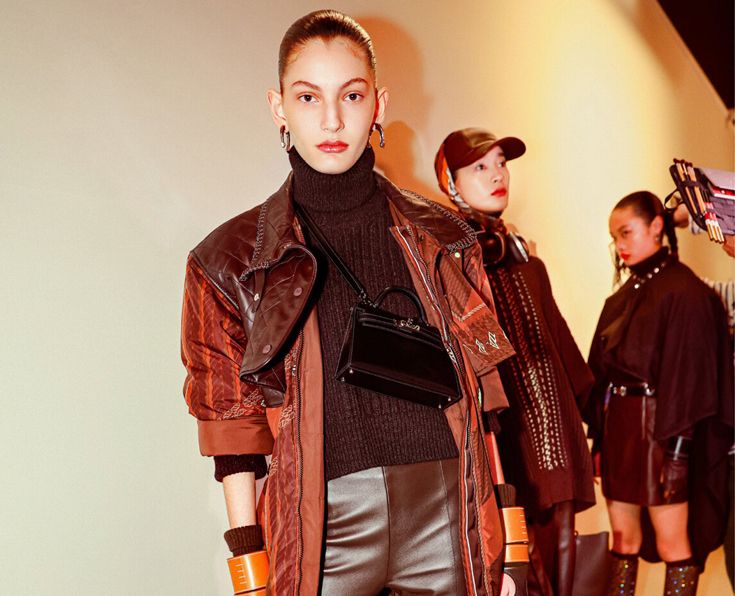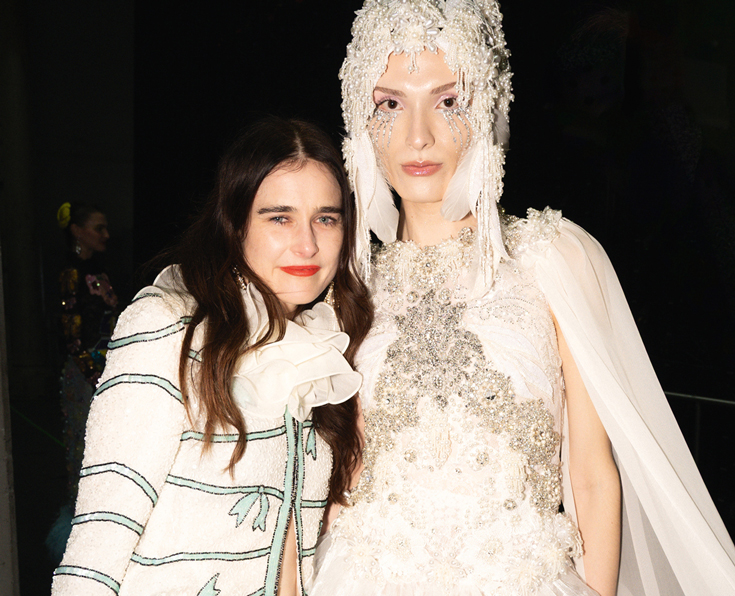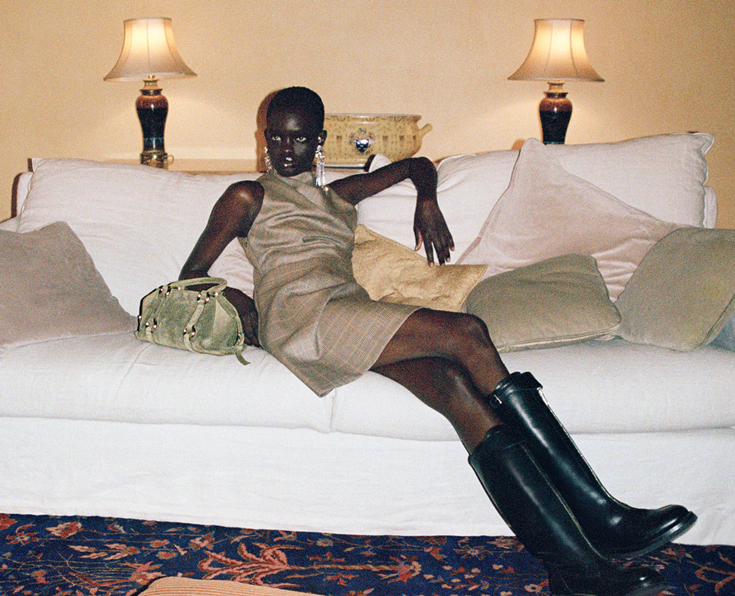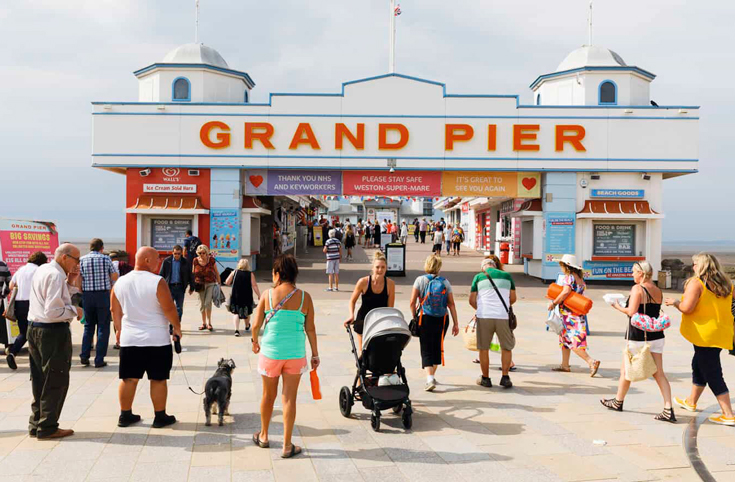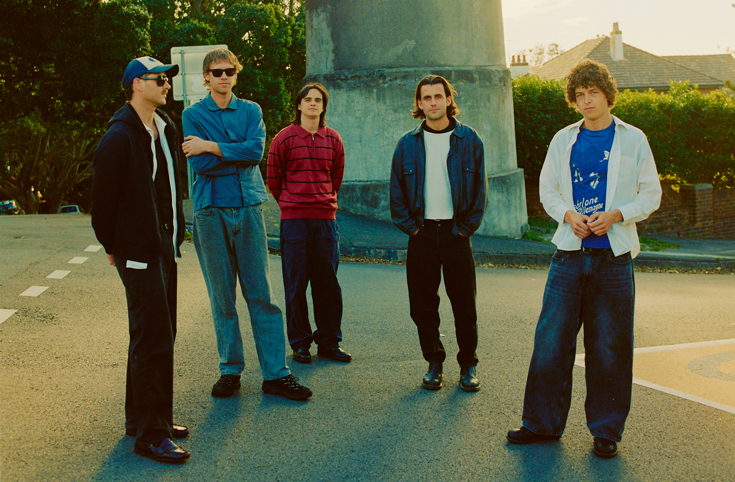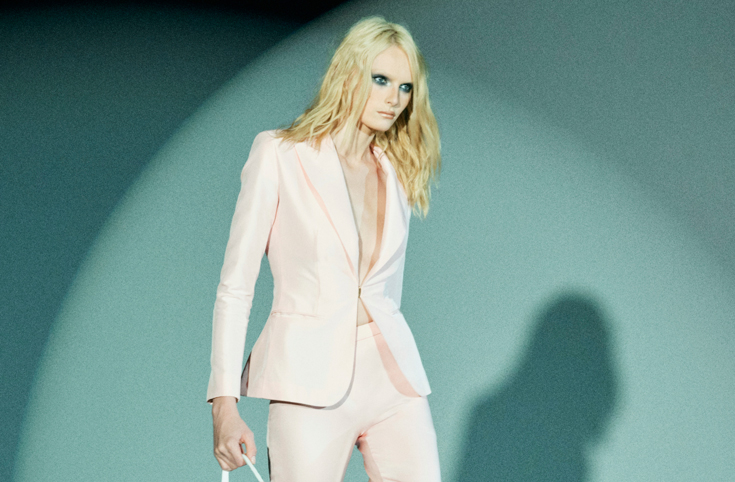BARRY REIGATE ON THE ART OF IMAGINATION
A trip up to the North London suburb of Cockfosters can make you feel like you’ve landed a world away from inner-city life. After travelling an hour or so from 10 Towers in Soho, I arrive in a quaint neighbourhood that feels more like a countryside idyll than the last stop on the Piccadilly Line. The grass is a rich green and that familiar taste of petrol fumes that usually fills the air seems like a thing of the past.

I’ve come to meet the contemporary artist Barry Reigate at Chickenshed, the inclusive youth theatre company founded almost 50 years ago out of the desire to give young people – from five-year-olds to early twenty somethings – the chance to immerse themselves in the arts, no matter their background.
It’s here that Reigate has been working with Louise Perry, Chickenshed’s managing director, to stage a series of workshops based on a character called Patrick that he created more than a decade ago. “I would basically draw him just to pass my time,” says Reigate, now 52, who first thought of Patrick when he was looking after his daughter in the evenings. “I don’t watch TV and over the years I just kept on drawing him. It’s kind of this weird, sort of unconscious process of drawing, and when I look back on it I actually feel like it’s been a kind of therapy for me. Just to be doing something like that, revisiting this thing inside me that was coming from my imagination.”

Delightfully disjointed, Patrick has the head of a pumpkin with the ears of a rabbit. Lanky and almost skeletal, he has limbs that bend like Play-Doh and feet that come in clown-like proportions. “Drawing Patrick would get me through difficult times,”says Reigate. “Because art became my career, and I was making a living out of it, it changes the nature of creating as there’s a pressure there. Drawing this character was my relaxation.”
Reigate, who specialises in painting and sculpture, has produced work that has often danced between brash pop-cultural motifs and dark, humorous undertones. The London-born artist studied at Camberwell College ofArts and Goldsmiths through much of the 1990s. His work, which often incorporates cartoons in off-kilter formations, has touched on sexuality, race and class, appearing at Tate Britain and the Saatchi Gallery.
After amassing a wealth of Patrick drawings, with the encouragement of his family and loved ones Reigate set about crafting a story around his strange-looking being. In late 2021 he started working with the writer-director Simon Aboud to shape Patrick’s narrative, with the pair meeting up for an hour or so each week for a year. “[Simon] helped me dig into my unconsciousness,” says Reigate. “We’d sit around and ask, ‘Did he come from another planet?’, ‘Is he an alien?’ After a while I just thought,‘Why don’t we just be honest? He’s from my imagination.’”

In the tale, we’re thrust into a dystopian society not too dissimilar from our own, with city-dwellers going about their days, their heads buried in their phones. School kids are taught solely via digital tablets and one child, Bryony, begins to grow tired of creating and decides to stop drawing completely.Because of this, Patrick, a figure of her imagination, begins to fall apart, his body parts dropping off one by one. Afters ellotaping himself back together again, he heads to London to save Bryony’s imagination and the pair embark on an adventure.
“The way Barry talks about Patrick, how he is held together by imagination, it resonates with a lot of young people we work with,” says Perry. “That they are made of different bits, that they don’t always look how they are ‘supposed’ to look or that they’re expected to behave a certain way.”
Chickenshed has roughly 650 members attending its children’s and youth theatres each week and maintains an open-door policy that is about welcoming young people regardless of their race, gender, ability and economic background.“We talk a lot about the concept of universal imagination – those of us who haven’t had to face many barriers believe that all children have access to their imagination. But some of the young mentors who work here now who have a lived experience of facing barriers see imagination as a privilege,” Perry continues. “A lot of children aren’t given the space to imagine; many of the children we work with are so busy supporting their family structures and reacting to inequalities they face daily that it’s a privilege to be able to imagine.”

Reigate and Perry first connected through one of Chickenshed’s trustees. Since then they’ve been staging workshops based around Patrick to re-engage children with their imagination. “Fundamentally the character is about believing in what you can do and self-love,” says Reigate. During my trip to Chickenshed, a dozen or so children, after listening to Patrick’s story, are invited to play a game of Exquisite Corpse to build their own imaginary character. They’re each given hilarious names – Circus Christmas Bug, Snow Strong Sweet Robot and, my personal favourite, Mr. Fancy Pants – and the children are tasked to give each a skill. Mr. Fancy Pants, with a rainbow-hued body and a moustachioed potato head, is “brilliant at doing nothing”, shouts one child. While the robot, with one juiced-up bicep and a twig arm like a snowman’s “has the answer to everything” thanks to the TV that lives in his stomach.
Innocent and full of joy and wonder, despite the responsibilities placed on these children beyond Chickenshed’s doors, here they’re allowed to dream big, imagine without limits and simply just be kids.

“Patrick is this innocent character and he doesn’t fit in,” says Reigate.“Especially when you’re growing up, I think all of us worry about fitting in. Patrick doesn’t even know if he’s a rabbit or a pumpkin, he is this odd character with really goofy clothes. He doesn’t care if he’s going to make a mistake, he will carry on through life with a sense of curiosity. Today there’s a lot of pressure to grow up much quicker. I hope Patrick entices a sense of adventure for these kids.”
Moving forward, Reigate and Perry are set on continuing their imagination workshops and plan to bring Patrick into schools across London. “Art is less and less focused on in schools – I see it less in the curriculum,” says Reigate. “Art isa way to learn how to be critical, to think differently, to be independent and be confident about who you are. Creativity is about expansion, growing and connecting.” Perry adds: “Patrick is about adventure – it’s great that children are starting to feed into that.”

Back in October, Reigate unveiled Patrick to the public through an exhibition at the Covent Garden space of The Bomb Factory Art Foundation – an artist-led, non-profit gallery and charity organisation – where the earliest incarnations of the character sat alongside a human-sized sculpture of his creation. Patrick has made it into the world of high-performance running, too, with Reigate collaborating with Hylo Athletics to create packaging emblazoned with Patrick’s portrait for the brand’s trainers.
But despite Patrick being fully out in the world now, Reigate still sees him as a form of personal therapy for himself: “The fact that I decided to launch him is cathartic and makes me even feel nervous. I suppose it’s like whenever you have to goon stage. I decide to show him to make myself free.”
Taken from 10+ Issue 6 – VISIONARY, WOMEN, REVOLUTION – out now. Order your copy here.

BARRY REIGATE: SMASHING PUMPKIN
Text PAUL TONER
Portraits JOSHUA TARN
Artwork BARRY REIGATE

